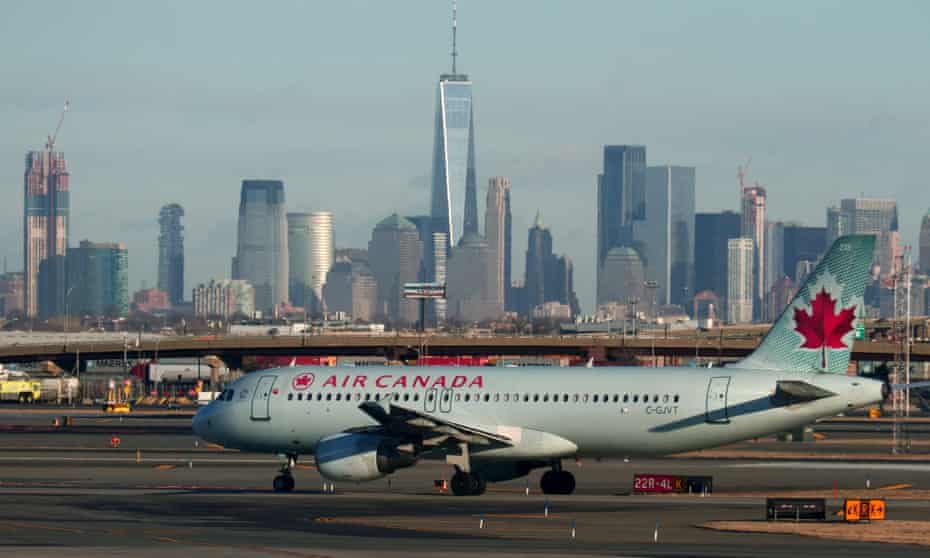
In recent years, the implementation of tariffs by the Trump administration has significantly impacted the global aviation industry, and Canadian airlines are no exception. As trade tensions between the U.S. and Canada escalated, several Canadian carriers were forced to rethink their strategies, particularly concerning their operations in the U.S. market. The aviation sector, known for its high operational costs and dependency on international trade and tourism, has been significantly affected by both economic shifts and political turbulence.
When former President Donald Trump introduced a series of tariffs, aiming to reduce the U.S. trade deficit and impose economic pressure on foreign markets, Canadian industries were among those most directly impacted. With the U.S. imposing tariffs on steel and aluminum, the costs of maintaining aircraft fleets surged, prompting Canadian airlines to review their operations and cost structures. Many of these airlines rely heavily on U.S. routes, but with the financial pressure mounting due to higher operational costs, several have begun to scale back their American routes or adjust their schedules in order to mitigate losses.
Air Canada, one of the largest carriers in the country, announced a reduction in some of its U.S. services, focusing on more profitable routes and discontinuing less-traveled destinations. Smaller airlines like WestJet and Air Transat have also made similar moves, scaling back on the number of flights between Canada and various American cities. These airlines are struggling to maintain profitability in the face of increasing fuel prices, higher maintenance costs due to tariff-induced price hikes, and diminished consumer demand during periods of economic uncertainty.
Furthermore, tariffs on Canadian goods and services have had a knock-on effect on tourism, with fewer U.S. travelers opting for vacations in Canada due to the increasing cost of goods and services. This, in turn, affected flight demand between the two countries. As a result, Canadian airlines had to adjust their flight schedules to reflect the lower demand.
The scaling back of U.S. operations by Canadian airlines is not just a short-term reaction to the immediate economic pressures caused by the tariffs. Analysts warn that these changes could have a lasting impact on cross-border travel and the broader aviation market. Many experts believe that the long-term ramifications could include fewer intercontinental flight options, higher ticket prices for consumers, and reduced competition in the aviation industry.
Additionally, the trade war and the imposition of tariffs have strained relations between the two countries, making it harder for companies to forecast and plan for the future. Airlines depend heavily on stable economic conditions and good international relations, and the volatility in U.S.-Canada relations complicates their ability to make long-term investments in new routes or infrastructure.
Despite the difficulties faced by the aviation industry, some Canadian airlines have started to focus on strengthening their domestic operations and increasing their presence in other international markets. Air Canada, for instance, has redirected its attention towards expanding its routes to European and Asian destinations, areas that have proven to be less volatile compared to the U.S. market.
Meanwhile, smaller carriers like WestJet have looked to the U.S. southwest and sunbelt regions for new opportunities, targeting niche markets that could bring in higher-margin passengers, such as seasonal tourists, business travelers, and snowbirds. In addition, these carriers have increased their focus on providing low-cost, short-haul flights to compete against regional competitors
As trade tensions continue to evolve and the economic effects of the Trump tariffs linger, Canadian airlines are forced to adapt. The immediate impact of reduced U.S. operations is visible, but the long-term effects on the aviation landscape remain to be seen. Industry experts caution that airlines need to brace for further volatility in the international market and potentially lower profit margins in the coming years.
While U.S.-Canada relations may improve under future administrations, the lessons learned from the tariff wars of the Trump era could lead to a more cautious approach to international expansion for Canadian airlines. The industry will likely focus on diversifying its portfolio of routes and reinforcing its resilience against unexpected economic shocks.
In the end, the aviation sector, which once thrived under the interwoven networks of international trade and tourism, may never return to its previous state. As Canadian airlines scale back their U.S. operations, they will have to navigate a new, more uncertain world where trade barriers and political tensions could become the new norm.

